In 2016, while working on a re-translation of a Sumerian literary text, I came across this image on the Cuneiform Digital Library Initiative website. It was apparent to me that the multiple imprints on this clay tablet were strikingly reminiscent of the T-shaped pillars of Göbekli Tepe.i I decided to present my theory to Graham Hancock, who found it sufficiently interesting to post on his blog.
More recently, while trawling the internet for new photos of the excavations at the site of Göbekli Tepe, I came across this blog post, on the Tepe Telegrams website. The author, an archaeologist working at the site in 2017, reacts to my interpretation of the image on that tablet.
Their post is reproduced in quotes throughout this article–original hyperlinks included–with my comments added along the way:
QUOTE Recently, I stumbled upon a blogpost by Graham Hancock [external link]. I was looking for something completely different, i.e. the “fallout” of the rather unfortunate meteor theory proposed by two researchers from Edinburgh in April. What I found however sent me off in a completely different direction. As it is a prime example how false interpretations of images arise, and how they could have been prevented right from the start, I thought I should write a few words about that blog post here. UNQUOTE
I take this to mean that my “false interpretation” could have been prevented if I had acted less impulsively, taking the time to fully digest and accept the official explanation of the image. That, in turn, strongly implies that archaeologists have no problem comprehensively interpreting such findings. We shall see.
QUOTE In his short text, Hancock explains that an independent researcher, while browsing the images in the online database of the ‘Cuneiform Digital Library’ [external link], found a depiction of the enclosures of Göbekli Tepe with their iconic T-shaped pillars. UNQUOTE
Graham Hancock does not make any such bold assertion. He proposes that the image is “deeply puzzling” and “appears to show one or more oval enclosures of the Göbekli Tepe type”.
QUOTE… on a seal impression from Susa, dating to the Uruk V period. The settlement phase Uruk V constitutes together with Uruk IV the Late Uruk Period. The details of the absolute chronology of this period, which sees the invention of writing (i.e. proto-cuneiform script starting from Uruk IVa) and the cylinder seal, is still under debate, but a general date between 3500-3100 BC seems to be safe. Göbekli Tepe is currently dated between c. 9500-8000 BC. So, there is some chronological and regional distance between the sites (Susa lies in nowadays Iran). “Nice mystery here”, to cite Hancock. But let’s have a critical look at the evidence, which is always a good idea when doing science. UNQUOTE
I do agree that a critical examination of evidence is always a good idea, whether “doing” science or art history, the main subject of my degree.
QUOTE Hancock’s post refers to a fragment of a cylinder seal impression, for which the ‘Cuneiform Digital Library’ database gives a scanned black and white photo and some background information, like the material (clay), the collection (Louvre, Paris) and the primary publication (MDP 43, 676). It is also clear that the image is rotated – most likely accidentally – by 180° compared to the original publication (the number is upside down). And there they are, the two T-shaped pillars encircled by an oval, shown two times. A perfect abstract depiction of a round building from Göbekli Tepe’s older layer, as it seems. Alright, the pillars inside the perimeter wall are missing. But who cares? It could be an abstracted depiction of something a few millennia older but apparently still very well known. UNQUOTE
“But who cares?” I care. Graham Hancock cares. A lot of people care about our common history and the truth of it. The author continues to build their case on the implication that certain absolute claims as to “round buildings” have been made on impulse, unaccompanied by intelligent thought process. I challenge them to provide clear evidence of this implication, instead of stooping to the realm of imprecise offence.
The author also suggests that the image is not particularly reminiscent of Göbekli Tepe. I would be interested to know how they would go about creating a ‘perfect abstract depiction’ of that singular place. Its most iconic elements, the two central pillars, and the overall shape of the place would, in my view, be among the most obvious candidates.
QUOTE The seal impression is fragmentary and highly damaged. It is obvious that the original image was more complex. UNQUOTE
The author is referring to the fact that there was originally a seated figure to the right of the T-shaped image where the tablet has been damaged. For him, the presence of this figure means that the overall symbol is proven to have nothing to do with Göbekli Tepe. It is a straightforward weaving scene. The figure is a weaver.
I have found another example of the same T-shaped image, this time in a less fragmented condition on a completely different type of clay artefact. This one is a bulla, and shown on CDLI under reference P254193.ii Bullas are hollow balls of clay containing small counters, and are designated as pre-writing, ca. 8000 to 3500 BCE. They are thought to have been used for trading. In the photo below, we can see a seemingly squatted figure to the right of the pillar, with one hand touching it. An animal can also be seen there in profile, with its paws firmly planted just above. The animal is close enough to suggest they are part of the same stamp. Planting two different stamps side by side into the moist clay would likely not leave such a neat impression.
QUOTE If we turn the image correctly and look a little closer, in front of the left Ts, which now do not resemble Ts anymore UNQUOTE
Since there is no writing on the tablet that might otherwise indicate a correct way of looking at it, see the bulla here above for a more convincing take on the correct perspective for the T-shapes.
QUOTE …There is an indication of some more depictions that are hard to identify on the b&w photograph. That is why finds were and mostly still are drawn in archaeology, and in any case described extensively. And where to find a drawing and description of the find? In MDP 43 of course. I perfectly understand that this is the point at which those with a general interest in archaeology and browsing through an online database might be lost. MDP refers to the series “Mémoires de la Délégation Archéologique en Iran”.
Why the “P”? Because the series was first called “Mémoires de la Délegation en Perse” and the abbreviation never changed. If we look the find up in volume 43 of this series, written by Pierre Amiet and dealing with “Glyptique Susienne”, the scene is described as “two figures sitting on the left, on curved seats, in front of apparatuses made up of two supports with square bases and an elongated oval element”. And the drawing of the sealing shows just that. The persons are touching this “oval element” with their hands. The publication has some more depictions of this kind on sealings, and at least some, such as MDP 43, nr. 673 or 674 are less fragmentary. It becomes immediately clear that we are not dealing with a depiction of T-shaped pillars, but of two supports with square feet at the bottom and a knob at the top, connected by an oval.
The depictions of people interacting with this “apparatus” are part of a group of sealings that shows people at work, and some of the images with the supports strongly hint in the direction of weaving (esp. nr. 673), the “oval” most probably being the depiction of a thread. UNQUOTE
This is the tablet the archaeologist is referring to:
I agree that the instrument is quite likely the same. This said, to my knowledge, there is no evidence of there having been any such weaving “apparatus” with just these two rectangular top or bottom-heavy ends. I point once again to the bulla, which also allows a comparison to our original tablet. I see the potential for a four-legged creature sat on top of–or underneath–an ordinary weaver’s loom as unlikely.
I am more than happy to go along with the conclusion that the image is that of a loom. But I see it a simplification of both a practical tool and the cosmic loom. As above so below. In fact, in my book (The Story of Sukurru, a re-translation of one of the earliest literary texts) I build an argument for the possibility that stone circles represent the earthly version of the cosmic circle loom, where the T-shaped pillars are the pegs around which the cosmic Matriarch’s thread is woven.
QUOTE So, absolutely no “nice mystery here”. Just a misinterpretation of a highly fragmentary depiction. While dealing with prehistoric imagery things like that can happen quickly. Because the human brain interprets things in relation to former experiences and knowledge. In the case at hand, I have seen images of Göbekli Tepe’s round to oval enclosures with their iconic pair of monumental T-shaped pillars. Then I see two T-shapes on a scan of a b&w image of a highly-weathered fragment of a clay seal impression. And immediately make a connection between the two. UNQUOTE
Yes, I had seen photos of Göbekli Tepe, and, yes, the similarity was immediately striking. It still is. The weaver’s circle (or round) loom with which I later associated the pillars was unknown to me then. I discovered the existence of this weaving instrument by means of my translation and interpretation of two collocated Sumerian symbols, LUM and GAM.

LUM is the phonetic form of this symbol and the origin of our word loom. It is represented by what appears to be a pattern of stitches in the earliest pictographic form of the Sumerian language.

GAM gave us the French word gamme, the scale or range.
The symbols appear together on line 236, in a fragmented section of The Story of Sukurru, as: “on the circle loom a beautiful black feather to thread”.
Pictured here below is a modern version of a hand-held loom with pegs.
QUOTE Science starts when I challenge that superficial connection in the way described above with some simple questions that work not only in the case at hand
1. General chronological and cultural-historic reasoning: What is the cultural background of the artefact I am looking at and how old is it? How likely might it be that the people making it depict an object or a site millennia older and not something well-known to them?
2. Iconographical reasoning: How was the way of depicting things in that particular period, may the shape I am looking at fit the way of representing certain devices / objects / things? What else might be depicted that perfectly fits the cultural background / everyday activities of the people making the artefact? UNQUOTE
If we choose to look beyond the confines of everyday activities, another interesting association can be made. See the bulla at another angle here. There is a weaving scene to the left of Pierre Amiet’s loom, but at the same spot on the bulla we find intertwined serpents.iii In The Story of Sukurru, I suggest that this well-attested serpent image is synonymous of the warp threads hanging from the cosmic Matriarch’s loom.
It is also interesting to consider the association of stones, snakes, and weaving in the light of the ancient Greek ritual of winding unspun raw wool around the omphalos stone. No explanation has been given for such a strange ceremony. See an interpretation of the omphalos with criss-crossing and serpent on a bronze coin here below:
Then there is the Göbekli Tepe pillar, which has a serpent-headed net carved on it. This gives some credence to the association of the snake with thread on stone, and the possibility that the theme described on P281729 is extremely ancient, linking Göbekli Tepe to much later cultures:
There are also several intriguing Hittite scenes that go some way towards confirming the existence of wool or flax wound around a large T-shaped stone. The following is a detail from a drawing on a vase found at Hüseyindede in Turkey and dated to around 1600 BCE:
This detail from a bas relief carving on a wall in the Alaca region of Turkey is equally interesting. There are no signs of any weavers, but we see a figure holding his hand up to the T-shaped stone:
Egypt should not be left out of the ancient equation. My thoughts on the instrument used by Thoth are published under the title “Was Egyptian Thoth the Great Weaver?”
And this image of Seshat suggests to me that she is weaving on the pegs of the cosmic loom. I used it to illustrate the final line of The Story of Sukurru, “…Linking Earth and sky with her fine thread”:

Seshat carved on the back of the throne of the seated statue of Rameses II in the Amun temple at Luxor, c. 1250 BCE.
QUOTE
3. Challenging the evidence / its documentation: Is the depiction fragmentary or hard to evaluate for other reasons? What kind of documentation is available to me? Does it allow me to fully comprehend what is depicted? Or do I need further information before I can make up my mind?
4. Go to the sources. Archaeological artefacts, or artefacts similar to the one at hand are usually published somewhere, and these publications may hold further information and better images. It may be tricky to identify the available sources.
So, finally: Why not ask an archaeologist, some of us are nice people willing to help! UNQUOTE
Conclusion
My theory of the cosmic circle loom derives from a long quest to understand the most ancient Sumerian symbols. When I began re-translating The Instructions of Shuruppak using an unorthodox monosyllabic method, it wasn’t for the pleasure of proving other people wrong. I was and am curious to discover the truth for myself.
There is more to our history than first meets the eye. And there may be several layers of meaning underlying any symbol or image, as art historians well know.
I believe that the memory of Göbekli Tepe was still alive in the people of Mesopotamia who first wrote stories in clay to preserve them. I don’t underestimate the earliest Sumerians, whoever they were. I daresay they were great weavers too.
Look just below the T-shaped pillars on that first tablet. Is that a mouse peeping out of its hole?
Madeleine
References
i Detail from clay tablet found at Susa, Uruk V period, ca 3500 to 3350 BCE, reference P281729, Cuneiform Digital Library Initiative (CDLI).
ii Detail from bulla of uncertain provenience, ca 8500 to 3500 BCE, reference P254193, Cuneiform Digital Library Initiative (CDLI).
iii Clay tablet found at Susa, Uruk V period, ca 3500 to 3350 BCE, reference P281728, Cuneiform Digital Library Initiative (CDLI).






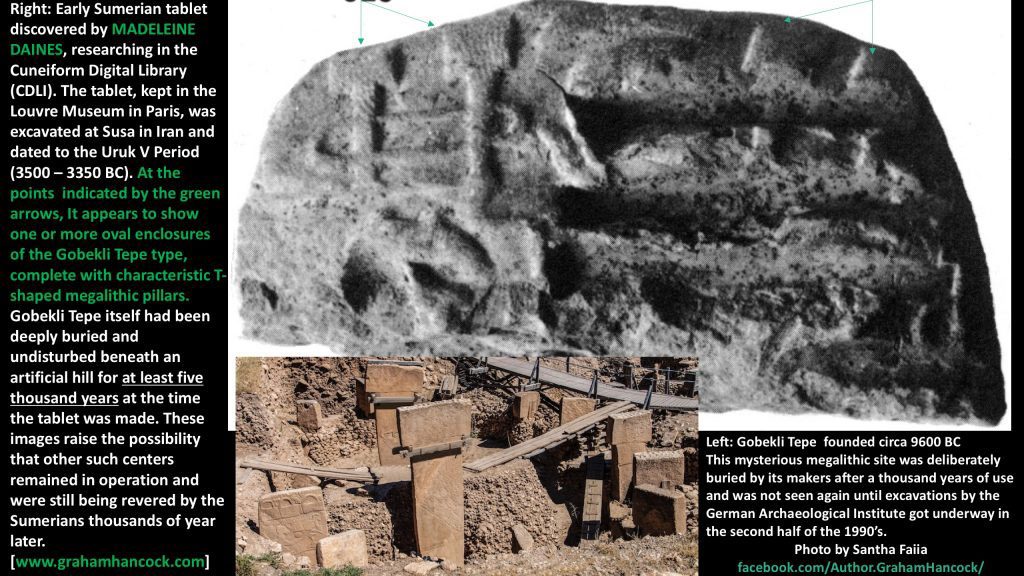


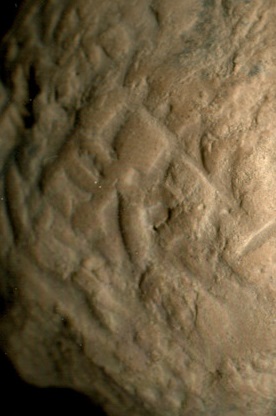


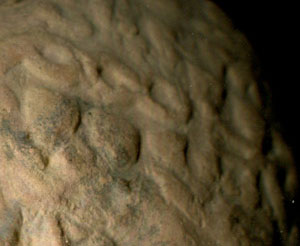
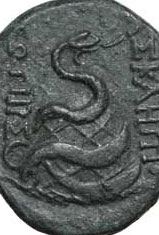
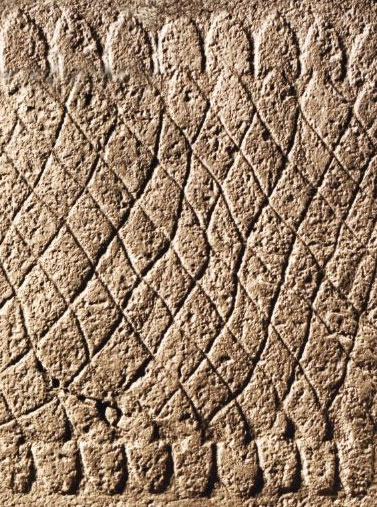
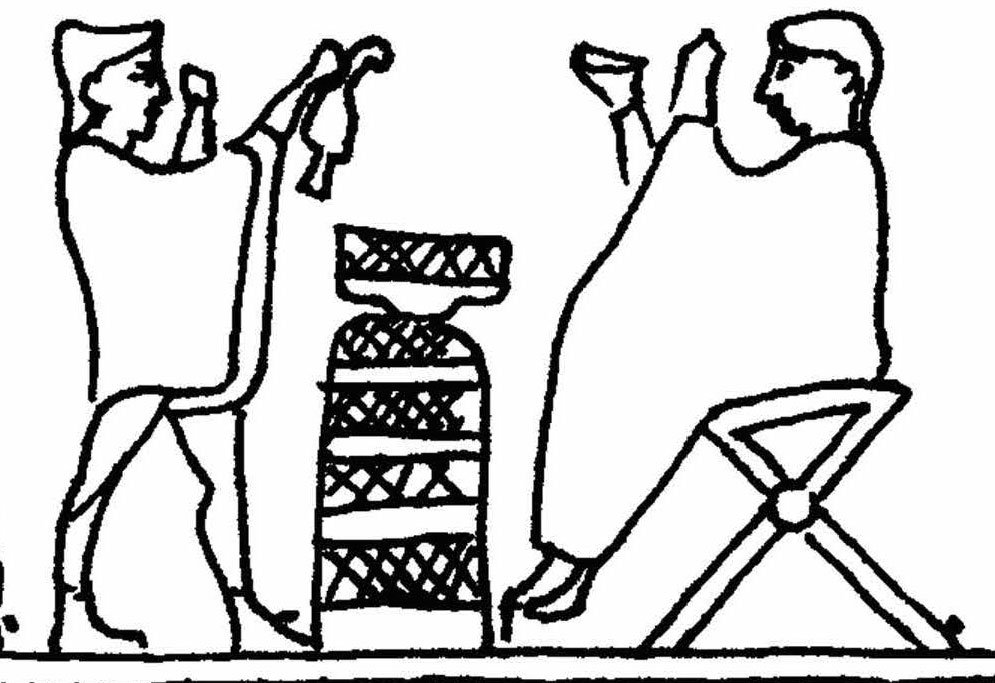

Wouldn’t it be great if Archeologists made a habit of reacting in this way, giving rise to a calm and rational debate, one that might actually result in a consensus or two completely logical and different opinions where they agree to disagree. This is sorely not the case in the last 150 years . The majority of mainstream archeology to anomalous finds, or finds that disrupt the current paradigm or official political doctrine of interpretation. have been condescending like the 1st paragraph, rife with personal attacks on the presenter and rarely actually addressing the question itself, let alone in a holistic manner. And in many cases dismissing the theory without reading the original article or visiting the site in question. This gave rise to the terms “armchair” and “windshield” or “windscreen” archeologists. Of course, archeology is not the only discipline where this type of unscientific, circle the wagons reaction is commonplace. But it is known for, at least in the past, refusing to use other sciences and technologies beyond the dust brush & screen strainer to determine a different or more expanded view. This is gladly changing with the varieties of technology available that can no longer be ignored but are actually used in locating sites and objects. A good wholesome, intelligent debate, free of (mostly)personal biases & academic polecisms. A few, brilliant witticisms or barbs can always enliven a sometimes boring exchange, if is done in a friendly manner. Mayhaps this will start a trend (not?). Kudos to all involved.
That Human History is much too much older than the main liners ever can imagine!
THAT is number one
Two is that NO ONE, INCLUDING INDIAN HISTORIANS AND ARCHAEOLOGISTS, are looking at the ‘Unification Theory of Human Civilization’ at all!
Three: India, as per our scriptures, History goes back 4.8 million years approximately!
AND what the world, both sides of Historians, main liners as also people like Graham Hancock, are not taking into this factor in their Researches!
This, in spite of Hancock himself having discovered submerged 2 sites off Indian coast over 10,000 years old!!!!!!
I will just like to say one thing to all interested in our Ancient begiNnings. that, If One wants to unravel the Mysteries of our Ancient Past; Then consider the ‘EAST’ as INDIA and CHINA!!!
The middle east for all the amount of Billion of $$$$$$ pumped in on research there; WILL NEVER EVER LEAD anyone near the TRUTH!
HARI AUM TAT SAT
WOW! Thanks for putting together this discussion. It amazes me how supposed scientists must start with the conclusion and try to adapt every finding to that conclusion or attempt to discredit the data before their eyes. The data, the finds, the dates, should weave the tapestry that is the story no conclusion they explorer wants to have it show.
Closed minds reject facts, discard corner cases, and pretend rather than following the facts to the proper result.
This is fascinating. A contemporary example of how we are indoctrinated to cringe at any new ideas that contradict what we are told is fact. It’s fantastic we have truly global communication now. We should really make the most of it before politics or disaster remove it.
I just love to work in archaeology. but I am in wrong job. I am wasting my time.
Is mainstream history right? Possibly/probably not but it is our best interpretation at this time.
Are alternate theories of history right? Although they are not accepted by mainstream scientists there is nothing saying that they are wrong, unless fully proven wrong.
Is the answer somewhere in the middle more than likely yes…..with symbols and languages that we know nothing about there can be multiple interpretations so we may never know the actual true meaning and the farther we go back in time the more there is a chance for error. By saying an idea is wrong because a previous idea was right is not good science, a good example of this is Columbus discovering the Americas. Although for many years it was argued that previous European civilizations may have or did make it to the Americas the mainstream would not budge because there was no proof. It is obviously now known that the Vikings and possibly other civilizations explored at least the coastal regions of North America.
We must continue to question any theory no matter how “proven” it is, there is nothing wrong with that, all this will do is 1. give more credence to the proven theory by showing the new theory is not as strong, 2. show that the new theory is a better theory and that the old one was not perfect, or most likely, 3. although the new theory is not perfect it does show that parts of the accepted theory are also wrong and more research needs to be done on the topic if we want to get as close to the truth as we can.
Dears…..
If the relief carved in a wall in Alaca, Turkey refer to people of gobekly tepe, and the ” T ” pillar are close to 12′ feet height,
The people living in gobleki tepe was a race of giant people with 15′ to 18′ feet toll….
And that was omitted in all reports, but will confirm the frescoes of the Rekhemere thumb in Egypt…
Correction….
Rekhemere tomb in Egypt…